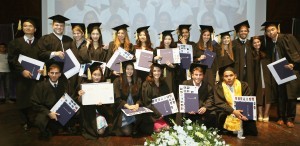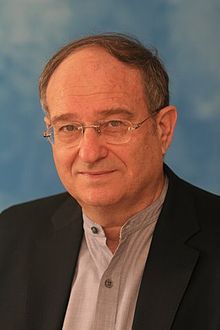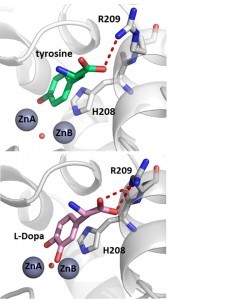Technion International Celebrates Class of 2014
“Ready to move mountains”
On August 7, 2014, Technion International celebrated the graduation of its second cohort of the BSc in Civil and Environmental Engineering, a four-year degree program taught entirely in English at the Technion. The talented group of 19 represent nearly all corners of the world, having come from Albania, Italy, Spain, Norway, India, and South Africa, and as far away as Venezuela, China, South Korea.
Students, families, distinguished faculty members, university staff and friends gathered at the Winston Churchill Auditorium last Thursday for the unique commencement ceremony. Cheerful and excited voices could be heard in nearly a dozen different languages all along the aisles.
Opening remarks were given by Prof. Anat Rafaeli, the current Head of Technion International, who greeted the graduates, their family members and distinguished guests, among them Technion President, Prof. Peretz Lavie, Prof. Moshe Sidi, Senior Executive VP of Technion, Prof. Arnon Bentur, founder and former head of Technion International, Prof. Oded Rabinovitch, Dean of the Civil & Environmental Engineering Faculty, Prof. Zvi-Pinhas Bar-Yoseph, Dean of the Mechanical Engineering Faculty, and Prof. Maxim Shoshany, from the Faculty of Civil & Environmental Engineering, and Academic Director of Technion International. Prof. Rafaeli showed the exponential growth of Technion International in numbers, from 19 undergraduate students beginning their English BSc studies in 2009 (its founding year) to 120 students enrolled in the program today, for example, and that these numbers are expected to grow to 400 by 2020. She also emphasized how proud the Technion is of the tremendous achievements of this graduating group and stressed the university’s commitment to educating the next generation of engineers and scientists who will make profound contributions to science and technology.
 Addressing the graduating class she said, “You have really excelled – five of you have been accepted to graduate studies at leading schools in Canada, the US and Britain while four of you will continue your graduate studies here at the Technion and others of you have already found jobs in the field. We are all very proud of you.”
Addressing the graduating class she said, “You have really excelled – five of you have been accepted to graduate studies at leading schools in Canada, the US and Britain while four of you will continue your graduate studies here at the Technion and others of you have already found jobs in the field. We are all very proud of you.”
Technion President, Prof. Peretz Lavie told graduates, “Technion International is one of the Technion’s projects aimed at fulfilling its mission of being a world-class university, and you (speaking to the graduates) are proof of this. You have come from all over the world, as far away as China, South Korea , South America, and South Africa and from near (Europe), and have done extremely well. Many of you are on the President’s and Dean’s lists – it’s no wonder that you were accepted to graduate studies at great universities.”
Prof. Lavie also talked about the where do we go from here, “The feeling of accomplishment that you have now, after completing this engineering degree, may be compared to that of a mountaineer who has reached the summit after an exhausting climb. Once on the top he can look back down the slope and say to himself “I did it” – I made it through algebra, physics and earthquake engineering and fulfilled my dream. He may then look beyond the summit and try to predict how his professional life will look like 20 years from now. I predict that the world will continue to change in a ‘dizzying rate’ – the 21st century is a time for rapid change. The knowledge you acquired here at the Technion will provide you with the tools you will need to be able to adapt to the rapidly changing world.”
He also expressed his insights on the future of their field, “There is a great importance to this field today. As part of and at JTCII (Jacobs Technion Cornell Innovation Institute) – a joint partnership between Technion and Cornell in Manhattan, an advanced degree program on the “urban environment” will be offered. And next year TGIT (Technion Guangdong Institute of Technology), our jointly run university in China, will open and the first undergraduate program it will offer is civil and environmental engineering.”
Three musical performances were given at the ceremony, one by two of tonight’s graduating students, Yuting Wang from China, who played the clarinet on the Technion Orchestra, and Yunzhou Zhang on guitar, also from China. The “Black & White” band, made up of Technion students, sang two classic songs, one in French and the other in Hebrew.
Ariel Geva, the Director of Technion International, reiterated the rapid growth of Technion International’s English programs and said that “This may be the last class I and other members of the staff here will know each of the students by name.” Speaking to the graduates he said warmly, “I want you all to know that you will always be welcome at Technion, and I wish you all much success.”
Micaël Zollmann from South Africa was the class valedictorian. Here are some experts of his heartfelt speech: “It is an honor and privilege for me to represent this class who has become like family… We were all in it together and we succeeded and suffered together naturally as if we came from the same place… I couldn’t categorize you as a group, because you are all truly ‘remarkable’ – you were willing to embrace the unknown, coming to a country that for most of us was an 8 hour flight back home, and have done amazing things like building a canoe out of concrete and winning a national competition… I believe you’ll all go on to do great things and tonight I feel I’m surrounded by winners… We all benefited from being in each other’s lives and tonight may be the last night we are all here together as a group. Thank you to Technion International, you’ve done a fantastic job… I’d like to end with this quote from Dr. Seuss, ‘You have brains in your head. You have feet in your shoes. You can steer yourself in any direction you choose…’” To this he added “And so there is no need to worry about what the future holds, for you are all far too clever.”
Professors Oded Rabinovitch and Maxim Shoshany awarded the diplomas to the class of nineteen, made up of 11 female students and eight male students of which six came from China and five from Italy: Fjordi Bisha from Albania,Yunzhou Zhang (Cum Laude), QianLi Yu, Sifang Shan, Tianchen Yu (Cum Laude), Ke Ji, and Yuting Wang (Cum Laude) all from China, Tanya Ahuja, (Cum Laude) from India, Nathan Nacamulli, Hanna Levy (Cum Laude), Manuela Olga Vaturi (Cum Laude), Tamar Ottolenghi (Cum Laude), and Elisa Tagliacozzo (Summa Cum Laude) all from Italy, Jonathan Savosnick, (Summa Cum Laud) from Norway, Micaël Zollmann from South Africa, JiYeon Ha from South Korea, Paula Barmaimon, (Cum Laude) from Spain, Tenzin Lobsang from Tibet, and Isaac Gabay from Venezuela.
Technion International was founded in 2009, and its academic programs are taught entirely in English. It offers undergraduate studies, semester abroad, research internships, study tours, advanced summer school programs and a variety of graduate studies. To date there are some 720 students enrolled in these programs, not including the study tours organized in collaboration with leading universities around the world. Technion International is also the first point of contact with international postdocs.






